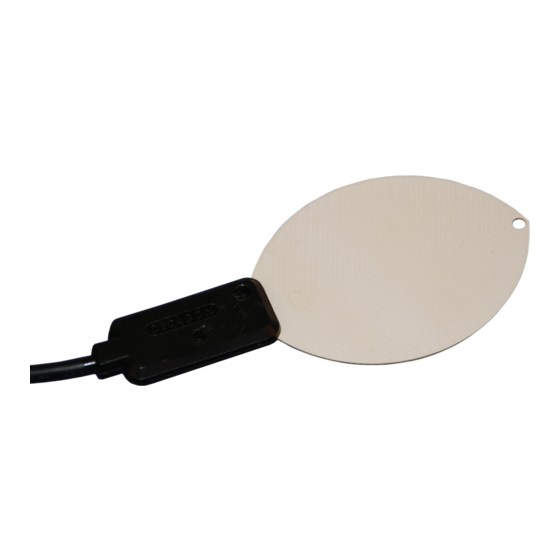
Summary of Contents for Campbell LWS-L
- Page 1 LWS-L Dielectric Leaf Wetness Sensor Revision: 3/09 C o p y r i g h t © 2 0 0 8 - 2 0 0 9 C a m p b e l l S c i e n t i f i c ,...
- Page 2 Warranty and Assistance The LWS-L DIELECTRIC LEAF WETNESS SENSOR is warranted by CAMPBELL SCIENTIFIC, INC. to be free from defects in materials and workmanship under normal use and service for twelve (12) months from date of shipment unless specified otherwise. Batteries have no warranty.
-
Page 3: Table Of Contents
7.1 Measurement.....................4 7.2 Leaf Mimicry ....................5 8. Example Programs ............5 8.1 CR10X Datalogger Program..............5 8.2 CR1000 Datalogger Program ..............6 9. Maintenance ..............6 Figures 1. LWS-L Dielectric Leaf Wetness Sensor.............2 2. Top View of a Typical LWS-L Installation..........2 3. Typical LWS-L Response................4... - Page 4 This is a blank page.
-
Page 5: General Description
To avoid these problems, leaf wetness “sensors” have been developed to estimate by inference the wetness of nearby leaves. The LWS-L estimates leaf surface wetness by measuring the dielectric constant of the sensor’s upper surface. The sensor is able to detect the presence of miniscule amounts of water or ice. -
Page 6: Installation
FIGURE 1. LWS-L Dielectric Leaf Wetness Sensor 3. Installation The LWS-L is designed to be mounted on a small diameter rod. Deployment in a plant canopy or on a weather station mast is typical. Two holes in the sensor body are available for mounting with zip ties or 4-40 bolts. -
Page 7: Wiring
Analog Ground 5. Measurement The LWS-L requires excitation voltage between 2.5 and 5 VDC. It produces an output voltage dependent on the dielectric constant of the medium surrounding the probe. Output voltage ranges from 10 to 50% of the excitation voltage. -
Page 8: Operational Principles
7. Operational Principles 7.1 Measurement The LWS-L measures the dielectric constant of a zone approximately 1 cm from the upper surface of the sensor. The dielectric constant of water (≈80) and ice (≈5) are much higher than that of air (≈1), so the measured dielectric constant is strongly dependent on the presence of moisture or frost on the sensor surfaces. -
Page 9: Example Programs
1480 J m . By mimicking the thermodynamic properties of a real leaf, the LWS-L closely matches the wetness state of the canopy. The sensor closely matches the radiative properties of real leaves. Healthy leaves generally absorb solar radiation in much of the visible portion of the spectrum, but selectively reject much of the energy in the near-infrared. -
Page 10: Maintenance
Boolean threshold. Clean the sensing surface with a moist cloth periodically or when elevated dry output is detected. LWS-L sensors exposed to high levels of UV radiation develop a chalky residue on the sensor surface. This causes the surface to lose its “sheen” over time and a small amount of chalky residue can be rubbed off the board during aggressive cleaning. - Page 12 Campbell Scientific Companies Campbell Scientific, Inc. (CSI) 815 West 1800 North Logan, Utah 84321 UNITED STATES www.campbellsci.com • info@campbellsci.com Campbell Scientific Africa Pty. Ltd. (CSAf) PO Box 2450 Somerset West 7129 SOUTH AFRICA www.csafrica.co.za • cleroux@csafrica.co.za Campbell Scientific Australia Pty. Ltd. (CSA)

















Need help?
Do you have a question about the LWS-L and is the answer not in the manual?
Questions and answers